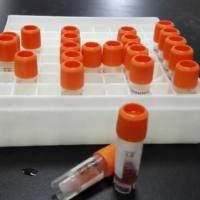Investigating the behavioral displays of male Siamese fighting fish
互联网
Investigating the behavioral displays of male Siamese fighting fish, Betta splendens
Introduction
Siamese fighting fish (Suborder Anabantoidei) have long been valued by aquarists for their brilliant colors, ornate fin shapes, and stylized behavioral displays. Originally from Thailand, virtually all of the Siamese fighting fish sold in pet stores are males that were bred specifically for these traits. Despite this artificial selection, domesticated fish (Betta splendens ) retain many of the behavioral and morphological characteristics of their wild counterparts.
Wild Betta thrive in warm (25 - 28 °C), often brackish pools and rice paddies. They tolerate the low-oxygen conditions in these habitats by slurping air directly from the atmosphere into a specialized respiratory organ. This adaptation allows them to persist in areas where many other species, particularly potential predators, cannot. This release from predation pressure undoubtedly contributed to the evolution of gaudy male colors and behaviors.
During mating, males build a "bubble nest" that they defend from other males by means of threat displays and extremely aggressive butting and biting (hence their name). While such encounters are rarely fatal, they can cause serious injury or leave combatants severely tattered. Males also use their colors and fins to court gravid females. Receptive females eventually choose a specific male and release their eggs on and near the nest. Males fertilize these eggs and gather them all into the nest. They then guard the eggs until hatching (24-36 hours later), again using aggressive displays to repel intruders. Thus, their behavioral displays have a variety of important functions that have direct relevance to an individual's reproductive success (= strong selection).
Past work has shown that the behavioral displays of Siamese fighting fish, though largely innate, may be induced by a variety of stimuli. The simplest of these (known as a sign stimulus ) will still elicit a full display or "Fixed Action Pattern " (FAP). In this lab, you have a variety of props at your disposal (including another Betta ) that will allow an investigation of the nature of these stimuli and the FAP, including how display intensity may wane with repeated exposure to certain stimuli (habituation).
<center> <font><b>Procedures</b> </font></center>1) To start, lab partners should agree to each choose one of the two fish on the table as the main subject of their investigations. Record some means for identifying this fish relative to the other.<center> <p> </p> </center>2) Before exposing the fish to any external stimuli, spend at least ten minutes observing its activities. What does the fish do? Does your presence seem to affect the fish? What measurements would allow you to quantify their behavior under these conditions? Write down at least two. A brief discussion among the lab will seek to identify the range of behaviors shown by these fish.
3) Now, carefully place the two fishbowls side-by-side and observe the fish for five minutes. What changes in behavior do you see in your test fish during this time? Record your basic observations. Separate the fish after five minutes and continue your observations for another five minutes. How does the fish respond when the external stimulus is removed? We will have another lab-wide discussion at this point to identify various features of the fish's behavior in the presence and absence of stimuli.
4) Based on observations and discussion, spend a few minutes working with your partner. Design a protocol for eliciting and quantifying the range of behaviors typically displayed by a male Siamese fighting fish when he encounters another male. Identify at least two behaviors that can be easily recognized and quantified (in whatever units of measurement you wish), then design a data sheet, either on paper or on the computer, that will allow you to enter and analyze your observations. Allow at least 30 minutes to conduct these tests. Remember that habituation may influence your results, so recording the time, as well as any patterns of display, will be important. Show your protocol to the instructor before proceeding.
5) Follow the protocol you developed in 4 (above), with each lab partner collecting data on "their" fish. Record these results on the data sheets.
6) After these trials, separate the fish so they can't see one another and analyze your results. How do your observations compare with your lab partner's. Were the results similar, or were there obvious differences between the two fish? How could you demonstrate this statistically?
For week two of this lab:
7) Based on these results, work with your partner to develop a hypothesis about what stimuli elicit a display by male Siamese fighting fish. Also, develop a plan to determine the minimum level of a particular stimulus that will still elicit a display. During the next hour, test these hypotheses using the available props (clay, colored pens). Remember, you want to be rigorous, objective, and quantitative in your assessment. Record your data and summarize the results upon completion of your trials.
8) During the last half hour of lab we will meet as a group and discuss our collective results, identifying hypotheses and interpreting the outcomes of various tests. As we proceed, focus on the range of questions and approaches that different groups used. Were certain protocols more productive than others? What basic conclusions do the collective results of the lab suggest? Now that you are an expert Betta watcher, what would you do differently? Use these ideas to guide the preparation of your written lab report. Your lab instructor will supply further guidelines for this write-up.
上一篇:Alcohol Consumption 下一篇:分离培养大鼠或小鼠小脑神经元 Dissociated Cultures of Cerebellar Neurons








